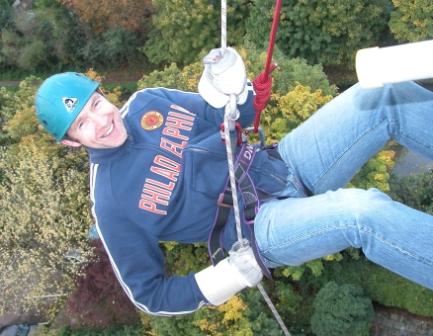On the first day we looked at attachment theory and the ideas put forward by John Bowlby which, in essence, state how and why we form attachments (emotional bonds) to one other throughout our lives, and what happens if those attachments are inadequate or severed. These ideas fit within the psycho dynamic approach to counselling - i.e. our past affects our present.
By looking at attachments early in our (clients) lives Bowlby suggests that we can predict the way our relationships are formed later in life, the depth of the relationship, and how we behave in it. The key is to explore the ‘inner working model’ that has developed inside of us and evaluate the likely security, or lack of, in adult relationships (attachments).
Bowlby suggest that if we have a ‘secure base’ in childhood, provided by our mother (though other family members can do this too) then the chances of successful relationships / attachments are far greater. A secure base is defined as the provision of a secure and dependable base (home) for the child to explore the world.
We discussed the key concepts of loss and separation theory and completed an Adult Attachment Interview form to help us understand our attachment style and how this might impact our work with clients.
I was reminded of my insecurity around whether a partner loves me and an assumption (at worst) or fear (at best) that they will leave me.
John Bowlby states that the capacity for attachment is innate and shaped by experiences early in our lives. For instance, where a child’s mother is absent or does not form a secure and reliable bond then the child will grow up with a lack of trust, and a general inability to form stable, close relationships.
Thus my insecurity is routed in my birth mother giving me up at 8 weeks and being placed in two foster homes before being adopted at 8 months. Attachment theory does therefore make some sense of my two failed marriages and subsequent divorces.
I also remember some of the circumstances that led to my seeking therapy whereby I was in a dating relationship where I developed the following picture of myself. I saw myself with a piece of elastic tied around my waist and the other end tied to a stake which was firmly stuck in the ground. While I was stretching towards my partner the elastic would only extend so far before it would return to the stake – my default position of insecurity. Thus I had a tendency to “blow hot and cold” as my feelings bounced around on the elastic. I knew I had to cut the elastic to move forward and succeed in intimacy, or at least move the stake!
When I began therapy, about two and a half years ago, my narrative concerning my childhood tended to be highly accepting of the circumstances. I considered it normal as I didn’t know any other way. Most of us would feel the same, however, our 'normal' doesn't mean healthy.
One worry for me is wondering what harm has been done to my son, Ned, aged nine, given he has spent most of his life in a sole parent home, though he still sees his mother. I think Bowlby provides some reassurance for me when he suggests that where other family members (this seems to pre-date single dads!) provide the child with a secure base in childhood then close relationships will be possible.
I realized in completing the questionnaire that the sadness and disappointment concerning my lack of a secure base run deep still. However, my understanding of attachment theory (and others) and how I would tend to behave or react, gives my hope for future relationships.

1 comment:
Just wondering, as a Christian, why do you have a 'star sign' listed on your profile?
Post a Comment